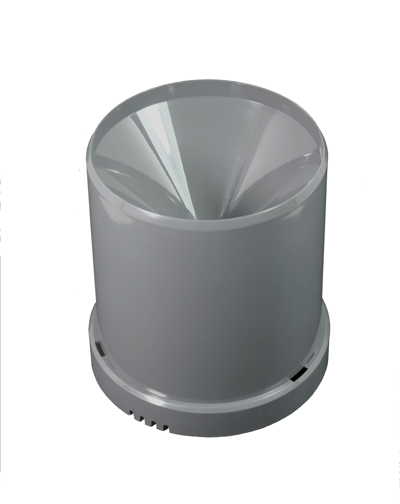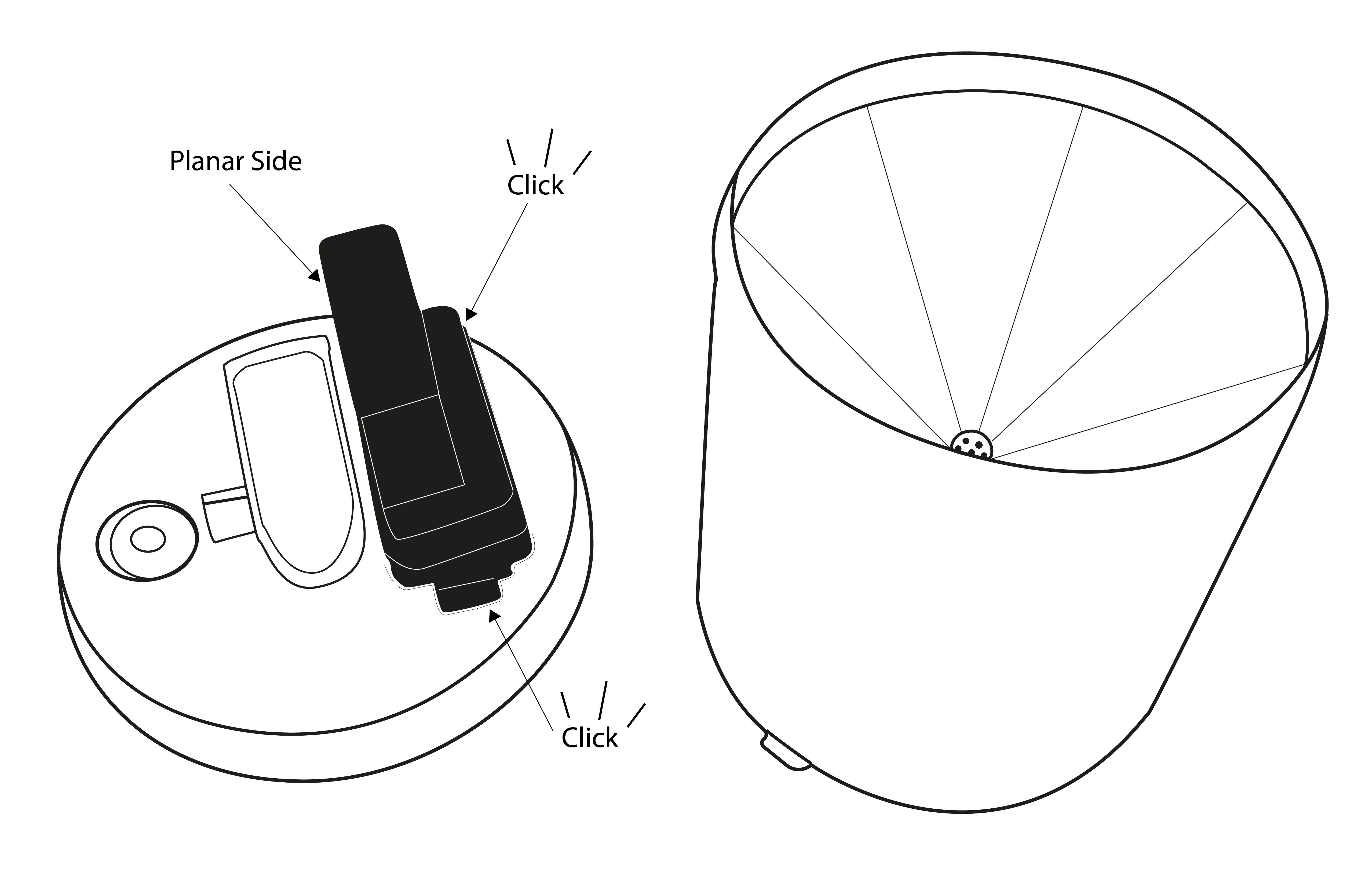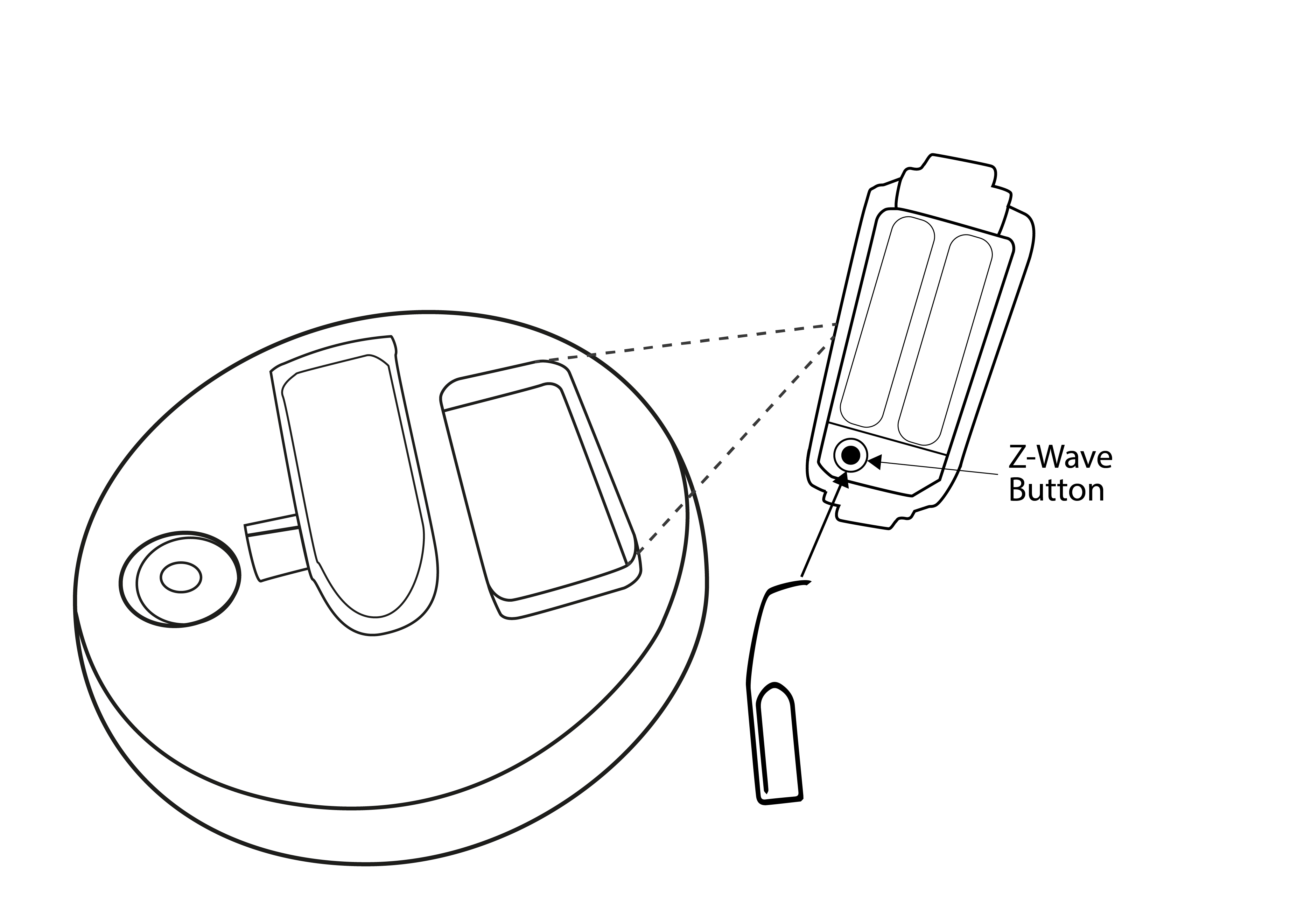Rain Sensor
SKU: POPE700168

Quickstart
This is a
Important safety information
Please read this manual carefully. Failure to follow the recommendations in this manual may be dangerous or may violate the law. The manufacturer, importer, distributor and seller shall not be liable for any loss or damage resulting from failure to comply with the instructions in this manual or any other material. Use this equipment only for its intended purpose. Follow the disposal instructions. Do not dispose of electronic equipment or batteries in a fire or near open heat sources.What is Z-Wave?
Z-Wave is the international wireless protocol for communication in the Smart Home. This device is suited for use in the region mentioned in the Quickstart section.
Z-Wave ensures a reliable communication by reconfirming every message (two-way communication) and every mains powered node can act as a repeater for other nodes (meshed network) in case the receiver is not in direct wireless range of the transmitter.
This device and every other certified Z-Wave device can be used together with any other certified Z-Wave device regardless of brand and origin as long as both are suited for the same frequency range.
If a device supports secure communication it will communicate with other devices secure as long as this device provides the same or a higher level of security. Otherwise it will automatically turn into a lower level of security to maintain backward compatibility.
For more information about Z-Wave technology, devices, white papers etc. please refer to www.z-wave.info.
Product Description
A request from the controller will be answered depending on the wake-up interval delayed by the Z-Rain.
Prepare for Installation / Reset
Please read the user manual before installing the product.
In order to include (add) a Z-Wave device to a network it must be in factory default state. Please make sure to reset the device into factory default. You can do this by performing an Exclusion operation as described below in the manual. Every Z-Wave controller is able to perform this operation however it is recommended to use the primary controller of the previous network to make sure the very device is excluded properly from this network.
Reset to factory default
This device also allows to be reset without any involvement of a Z-Wave controller. This procedure should only be used when the primary controller is inoperable.
Push the button inside the device for at least 10 seconds
Safety Warning for Batteries
The product contains batteries. Please remove the batteries when the device is not used. Do not mix batteries of different charging level or different brands.
Installation

The device consists of three pieces. The base (1) contains the gauge and a indicator to place it on a flat surface. The electronics block (2) is snapped into the base and a hood (3) covers the case and provides the funnel to collect the rain. Simple close-wise turning mounts and unmounts the hood. Before using the device the batteries need to be inserted into the electronics block. For this the device needs to be opened and the electronics block removed. Once the battery is installed the electronics block need to be placed into the base:
1. The flat side of the electronics block needs to be towards the gauge.
2. You need to push the two snap-in noses from the electronics block away to keep the block tight to the base and to avoid any water leckage.
The base can now be placed on a flat surface. If the surface is not flat - e.g. on soil? the device still must stand even to ensure correct measurement of the rain.
Note: Before the unit is ready for use, please remove the transport lock (small white cushions under the rocker)
Inclusion/Exclusion
On factory default the device does not belong to any Z-Wave network. The device needs to be added to an existing wireless network to communicate with the devices of this network. This process is called Inclusion.
Devices can also be removed from a network. This process is called Exclusion. Both processes are initiated by the primary controller of the Z-Wave network. This controller is turned into exclusion respective inclusion mode. Inclusion and Exclusion is then performed doing a special manual action right on the device.
Inclusion
Exclusion
Product Usage
Once the device is included and placed on the right spot it will report the rain level and alert on heavy rain. The max. precision of the rain meter is 3,5 mm rain per hour. Please not that the first measurement result right after start of rain may be inaccurate due to the measurement principle. The device counts full buckets of water and the filling level of the bucket prior to the start of rain is undetermined.
Maintenance:
Depending on the environment the device may get dirty over time. Please check the interior of the device frequency to remove old leafs and dirt that may cause incorrect measurements.
Node Information Frame
The Node Information Frame (NIF) is the business card of a Z-Wave device. It contains information about the device type and the technical capabilities. The inclusion and exclusion of the device is confirmed by sending out a Node Information Frame. Beside this it may be needed for certain network operations to send out a Node Information Frame. To issue a NIF execute the following action: Push the Z-Wave button once
Communication to a Sleeping device (Wakeup)
This device is battery operated and turned into deep sleep state most of the time to save battery life time. Communication with the device is limited. In order to communicate with the device, a static controller C is needed in the network. This controller will maintain a mailbox for the battery operated devices and store commands that can not be received during deep sleep state. Without such a controller, communication may become impossible and/or the battery life time is significantly decreased.
This device will wakeup regularly and announce the wakeup state by sending out a so called Wakeup Notification. The controller can then empty the mailbox. Therefore, the device needs to be configured with the desired wakeup interval and the node ID of the controller. If the device was included by a static controller this controller will usually perform all necessary configurations. The wakeup interval is a tradeoff between maximal battery life time and the desired responses of the device. To wakeup the device please perform the following action: Push the Z-Wave button once
Quick trouble shooting
Here are a few hints for network installation if things dont work as expected.
- Make sure a device is in factory reset state before including. In doubt exclude before include.
- If inclusion still fails, check if both devices use the same frequency.
- Remove all dead devices from associations. Otherwise you will see severe delays.
- Never use sleeping battery devices without a central controller.
- Dont poll FLIRS devices.
- Make sure to have enough mains powered device to benefit from the meshing
Firmware-Update over the Air
This device is capable of receiving a new firmware 'over the air'. The update function needs to be supported by the central controller. Once the controller starts the update process, perform the following action to confirm the firmware update: Push the Z-Wave button twice
Association - one device controls an other device
Z-Wave devices control other Z-Wave devices. The relationship between one device controlling another device is called association. In order to control a different device, the controlling device needs to maintain a list of devices that will receive controlling commands. These lists are called association groups and they are always related to certain events (e.g. button pressed, sensor triggers, ...). In case the event happens all devices stored in the respective association group will receive the same wireless command wireless command, typically a 'Basic Set' Command.
Association Groups:
| Group Number | Maximum Nodes | Description |
|---|---|---|
| 1 | 5 | Lifeline |
| 2 | 5 | Switching Command when Rain (> 0 mm/h). Basic Set Command is sent. |
| 3 | 5 | Heavy Rain detected. Basic Set Command is sent. |
Configuration Parameters
Z-Wave products are supposed to work out of the box after inclusion, however certain configuration can adapt the function better to user needs or unlock further enhanced features.
IMPORTANT: Controllers may only allow configuring signed values. In order to set values in the range 128...255 the value sent in the application shall be the desired value minus 256. For example: To set a parameter to 200 it may be needed to set a value of 200 minus 256 = minus 56. In case of a two byte value the same logic applies: Values greater than 32768 may needed to be given as negative values too.
Parameter 1: Rain Counter
This values shows the total count of rain from the moment of inclusion in mm water level. By writing this value this counter can be reset. Size: 2 Byte, Default Value: 0
| Setting | Description |
|---|---|
| 0 - 32000 | in mm |
Parameter 2: Rain Start Command
This BASIC Set Command value is sent out into Association Group 2 when the device detects start of rain Size: 1 Byte, Default Value: 99
| Setting | Description |
|---|---|
| 0 - 99 | BASIC Set Value |
Parameter 3: Rain Stop Command
This BASIC Set Command value is sent out into Association Group 2 when the device detects stop of rain Size: 1 Byte, Default Value: 0
| Setting | Description |
|---|---|
| 0 - 99 | BASIC Set Value |
Parameter 4: Meter Multiplier
This multiplier allows to adapt the display to certain controllers not being able to handle very low numbers. Size: 2 Byte, Default Value: 1
| Setting | Description |
|---|---|
| 1 | 1 |
| 10 | 10 |
| 100 | 100 |
| 1000 | 1000 |
Parameter 5: Heavy Rain
This threshold defines when a heavy rain condition is hit. In most countries this is defined as > 15 mm rain per hour. The default value however is to turn this function off. Size: 1 Byte, Default Value: 255
| Setting | Description |
|---|---|
| 0 - 255 | mm per hour |
Parameter 6: Heavy Rain Start Command
This BASIC Set Command value is sent out into Association Group 3 when the device detects start of heavy rain Size: 1 Byte, Default Value: 99
| Setting | Description |
|---|---|
| 0 - 99 | Basic Set Value |
Parameter 7: Heavy Rain Stop Command
This BASIC Set Command value is sent out into Association Group 3 when the device detects stop of heavy rain Size: 1 Byte, Default Value: 0
| Setting | Description |
|---|---|
| 0 - 99 | BASIC Set Value |
Technical Data
| Dimensions | 132x132x139 mm |
| Weight | 219 gr |
| Hardware Platform | ZM5202 |
| EAN | 4251295700168 |
| IP Class | IP 55 |
| Battery Type | 2 * AAA |
| Device Type | Routing Multilevel Sensor |
| Generic Device Class | Multilevel Sensor |
| Specific Device Class | Routing Multilevel Sensor |
| Firmware Version | 01.01 |
| Z-Wave Version | 04.05 |
| Certification ID | ZC10-17065642 |
| Z-Wave Product Id | 0x0154.0x0004.0x0011 |
Supported Command Classes
- Sensor Multilevel
- Meter
- Association Grp Info
- Device Reset Locally
- Zwaveplus Info
- Configuration
- Manufacturer Specific
- Powerlevel
- Firmware Update Md
- Battery
- Wake Up
- Association
- Version
Controlled Command Classes
- Basic
Explanation of Z-Wave specific terms
- Controller — is a Z-Wave device with capabilities to manage the network. Controllers are typically Gateways,Remote Controls or battery operated wall controllers.
- Slave — is a Z-Wave device without capabilities to manage the network. Slaves can be sensors, actuators and even remote controls.
- Primary Controller — is the central organizer of the network. It must be a controller. There can be only one primary controller in a Z-Wave network.
- Inclusion — is the process of adding new Z-Wave devices into a network.
- Exclusion — is the process of removing Z-Wave devices from the network.
- Association — is a control relationship between a controlling device and a controlled device.
- Wakeup Notification — is a special wireless message issued by a Z-Wave device to announces that is able to communicate.
- Node Information Frame — is a special wireless message issued by a Z-Wave device to announce its capabilities and functions.
Support and Contact
Should you encounter any problem, please give us an opportunity to address it before returning this product. Most questions regarding Z-Wave wireless communication standard can be answered through the international users community such as www.z-wave.info and others. If your question can’t be answered there, please use our Popp Z-Wave site
While the information in this manual has been compiled with great care, it may not be deemed an assurance of product characteristics. Popp & Co. shall be liable only to the degree specified in the terms of sale and delivery. The reproduction and distribution of the documentation and software supplied with this product and the use of its contents is subject to written authorization from Popp & Co. We reserve the right to make any alterations that arise as the result of technical development.
eMail: [email protected]
Web: Popp.eu
Declaration of Conformity
![]() Popp hereby declares this
device complies with the essential requirements and other relevant prescriptions of
Directive 1999/5/EC R&TTE. The complete CE declaration can be found on:
www.popp.eu/ce.
Popp hereby declares this
device complies with the essential requirements and other relevant prescriptions of
Directive 1999/5/EC R&TTE. The complete CE declaration can be found on:
www.popp.eu/ce.
All questions regarding this declaration of conformity can be directed to the following address: Z-Wave Europe GmbH, Neefestr. 147, 09116 Chemnitz, Germany
Disposal Guidelines
![]() Do not dispose of electrical appliances as unsorted municipal waste, use
separate collection facilities. Contact your local government for
information regarding the collection systems available. If electrical
appliances are disposed of in landfills or dumps, hazardous substances can
leak into the groundwater and get into the food chain, damaging health and
well-being.
Do not dispose of electrical appliances as unsorted municipal waste, use
separate collection facilities. Contact your local government for
information regarding the collection systems available. If electrical
appliances are disposed of in landfills or dumps, hazardous substances can
leak into the groundwater and get into the food chain, damaging health and
well-being.